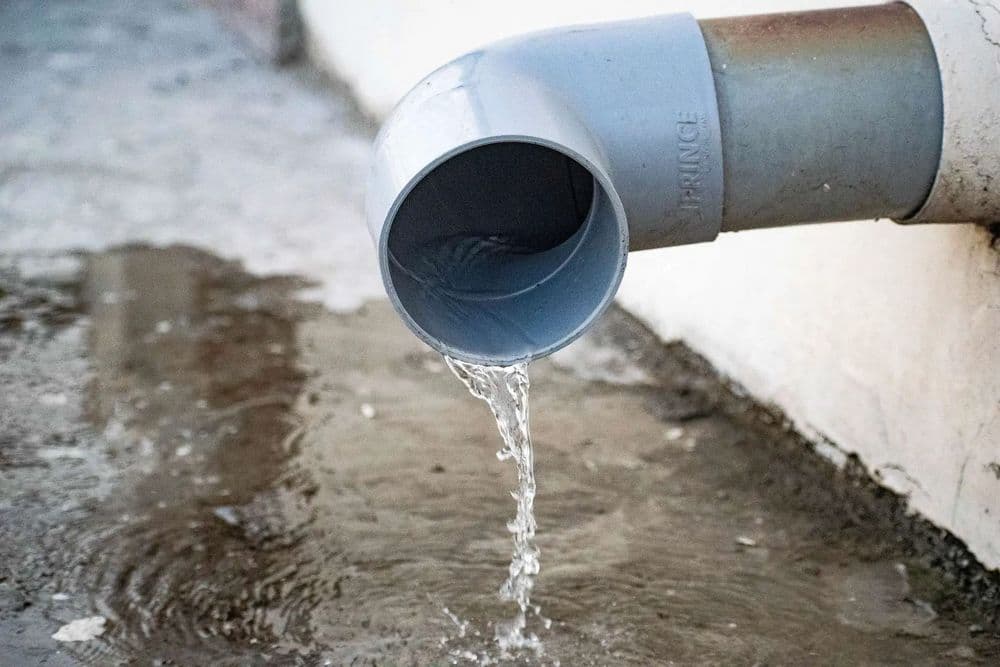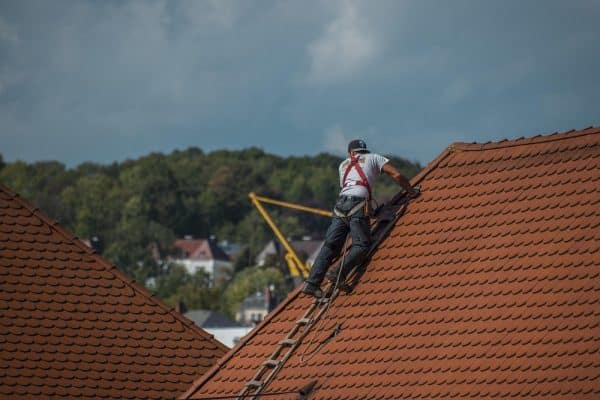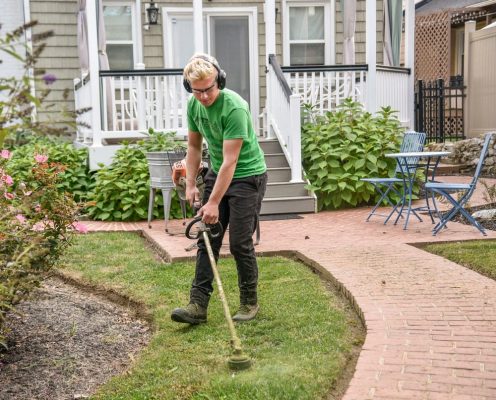
The sewage system is no exception to the rule that aging infrastructure can present special difficulties. However, you can avoid expensive repairs, reduce disruptions, and guarantee the efficient operation of your home’s sewage pipes by taking the necessary precautions.
In this article, we’ll provide some terrific advice and insights to keep your sewage pipes in top shape so you may live in a hassle-free, clean environment.
These upkeep methods will enable you to address possible problems head-on and protect the integrity of your sewage system, whether you’re a homeowner or the caretaker of an older house. So let’s dig in and learn how to keep the sewage lines in your old home in good shape.
10 Maintenance Tips to Keep Sewage Lines in Old Homes in Great Condition
Tree Root Control
Root incursion is a prevalent reason for sewer line damage in older homes. Invading trees can choke sewage pipes with their invasive root systems, causing clogs and backups. Trim or remove trees that are close to your sewage lines to prevent root infiltration.
You may lessen the possibility of root-related damage and keep the integrity of your sewage system by proactively treating this issue.
Maintaining the vegetation surrounding your sewage pipes through routine inspection and management will help to ensure their efficient operation and reduce the annoyance and cost of dealing with root-caused plumbing problems.
Dispose of Properly
It is essential to refrain from flushing non-biodegradable materials down the toilet or drain to keep the sewage lines in older homes in the best possible condition. Grease, wipes, and other materials can build up and cause blockages, resulting in backups and possible damage.
Instead, properly dispose of these things using the appropriate channels, including recycling containers or garbage cans.
This practice promotes a healthier and more effective plumbing system in your home by preventing unneeded strain on your sewage system, lowering the danger of clogs, and ensuring the smooth flow of wastewater.
Mindful Chemical Usage
Use caution while utilizing chemical drain cleaners to clear persistent obstructions in your sewage pipes. While they might offer a short-term solution, these cleansers have a long-term tendency to erode pipes, which might result in more serious harm.
Consider using natural alternatives like baking soda and vinegar or enzymatic drain cleaners to protect the integrity of your pipes.
It’s wise to get expert guidance from a plumber if the clogs continue or if you are unclear about the best course of action. They can make recommendations for efficient, secure, and situation-specific solutions that will prolong the life of your sewage lines.
Grease Management
Maintaining good sewage lines in older homes requires avoiding dumping cooking oils and grease down the drain. When flushed down the drain, these compounds can harden and build up over time, causing tenacious clogs.
Instead, let oils and grease cool and solidify before removing them in containers with tight lids. For these products, many cities have designated collection stations or recycling programs.
Using suitable disposal techniques, you may protect your plumbing system’s long-term health and functionality by avoiding clogs, reducing the possibility of backups, and ensuring a continuous flow of wastewater through your sewage lines.
Regular Inspections
It’s essential to schedule routine inspections by qualified plumbers or sewer experts to maintain sewage pipes in older homes. These professionals have the skills and equipment to spot potential problems early, enabling quick action.
They can treat problems like cracks, leaks, or clogs early on to prevent them from developing into worse issues. As a result, the efficient operation of your sewage system and the avoidance of expensive repairs may all be achieved with prompt action, giving you peace of mind and preventing any disturbances to your daily routine.
You can also look into professionals in your area, such as your local sewer company that operates within your city, and seek assistance from them.
Maintain Proper Slope
For historic properties to have effective drainage, the sewage lines must be kept at the proper slope. Consult a professional for an assessment and any necessary adjustments if you feel that your sewage lines have an inappropriate slope. An improper slope can obstruct wastewater flow, causing backups and serious damage.
Professional plumbers or sewer specialists have the knowledge and equipment necessary to precisely assess the slope and suggest workable solutions. You may improve drainage, reduce the chance of clogs, and preserve the overall efficiency of your sewage system by ensuring the slope of your sewage lines is correct.
Hot Water Flushing
An easy yet efficient maintenance procedure to preserve sewage lines in older homes in fantastic shape is to flush hot water down the drains regularly.
To avoid clogs and ensure uninterrupted sewage flow, hot water aids in the breakdown and flushing away of accumulated residue. By carrying out this routine maintenance task, you may prevent potential obstructions and maintain your sewage system’s best performance.
Including this practice in your monthly maintenance schedule encourages a strong and effective plumbing system and reduces the possibility of disruptions and expensive repairs in the long run.
Install Drain Screens
Installing drain screens or traps in sinks, showers, and bathtubs is advised to maintain the health of sewage lines in older homes.
These screens act as barriers, catching waste and keeping it from entering the sewage systems and sometimes clogging them. For these screens to remain functional, periodic cleaning is necessary.
You can ensure free-flowing water, reduce the possibility of blockages, and lengthen the life of your sewage system by clearing out accumulated material. Including drain screens in your monthly maintenance is a preventative measure for plumbing problems and guarantees the efficient operation of your sewage lines.
Protect Outdoor Cleanouts
The key to keeping sewage lines in terrific shape in older homes is regularly inspecting and safeguarding external cleanout stations. Keeping these access points open and clear is crucial because they are necessary for maintenance and repairs.
Cleanout points should have regular debris and dirt removal to maintain clear access. Additionally, consider shielding children from potential harm, such as unintentional bumps or exposure to inclement weather.
By adopting these methods, you can ensure cleanout points are open for inspections and repairs, enabling effective maintenance and reducing potential sewage system interruptions.
Educate Household Members
To keep sewage lines in historic homes in top condition, it’s crucial to teach everyone in your family how to utilize the sewage system properly. Spend some time explaining to your family what should and shouldn’t be put down the drain.
Make it clear how important it is to stay away from things like sanitary products, grease, and non-biodegradable wipes. You may considerably lower the risk of clogs and potential damage by reducing the input of these materials into the sewage system.
In the long run, everyone will profit from raising knowledge and appropriate behavior among household members, leading to a healthier and more effective sewage system.
Conclusion
In conclusion, keeping sewage lines in historic properties in good condition is essential to maintaining the property’s overall usefulness and integrity.
Applying the maintenance advice given can help you avoid clogs, reduce damage, and guarantee that your sewage system runs without a hitch.
Your sewage pipes may be kept in excellent shape with regular inspections, careful disposal techniques, and preventative actions like tree root reduction and grease management.
Remember to call in experts as necessary, such as plumbers or sewer specialists, to conduct thorough inspections and take prompt action on any potential problems.
You can avoid making typical mistakes that result in clogs or damage by educating yourself and the other household members on how to utilize the sewage system properly.
Frequently Asked Questions
Why is routine inspection crucial for keeping sewage pipes in older homes in good condition?
Regular professional inspections enable the early identification of damage or obstructions in sewage pipes. Early problem detection reduces the need for expensive repairs and further harm.
Rapid intervention can also guarantee the sewage system runs without hiccups, lowering the likelihood of problems.
How may sewage pipes in older homes be harmed by tree roots?
Sewage pipes can become infected by invasive tree roots, resulting in clogs and damage. When a tree grows, its roots may look for sources of nutrients and water, including sewage pipes.
This interference may result in blockages, cracks, or even total pipe failure. Therefore, to avoid root-related damage, trimming or removing trees with invasive root systems from proximity to sewage pipes is advised.
Are chemical drain cleaners safe to use on older homes’ sewage lines?
Chemical drain cleaners can unclog clogs quickly, but they can also erode pipes over time, which could lead to more serious damage. Therefore, it is advised to use them with caution.
To reduce the risk of pipe corrosion and protect the integrity of sewage lines, it is advised to choose natural alternatives like baking soda and vinegar or to consult a professional for persistent clogs.








